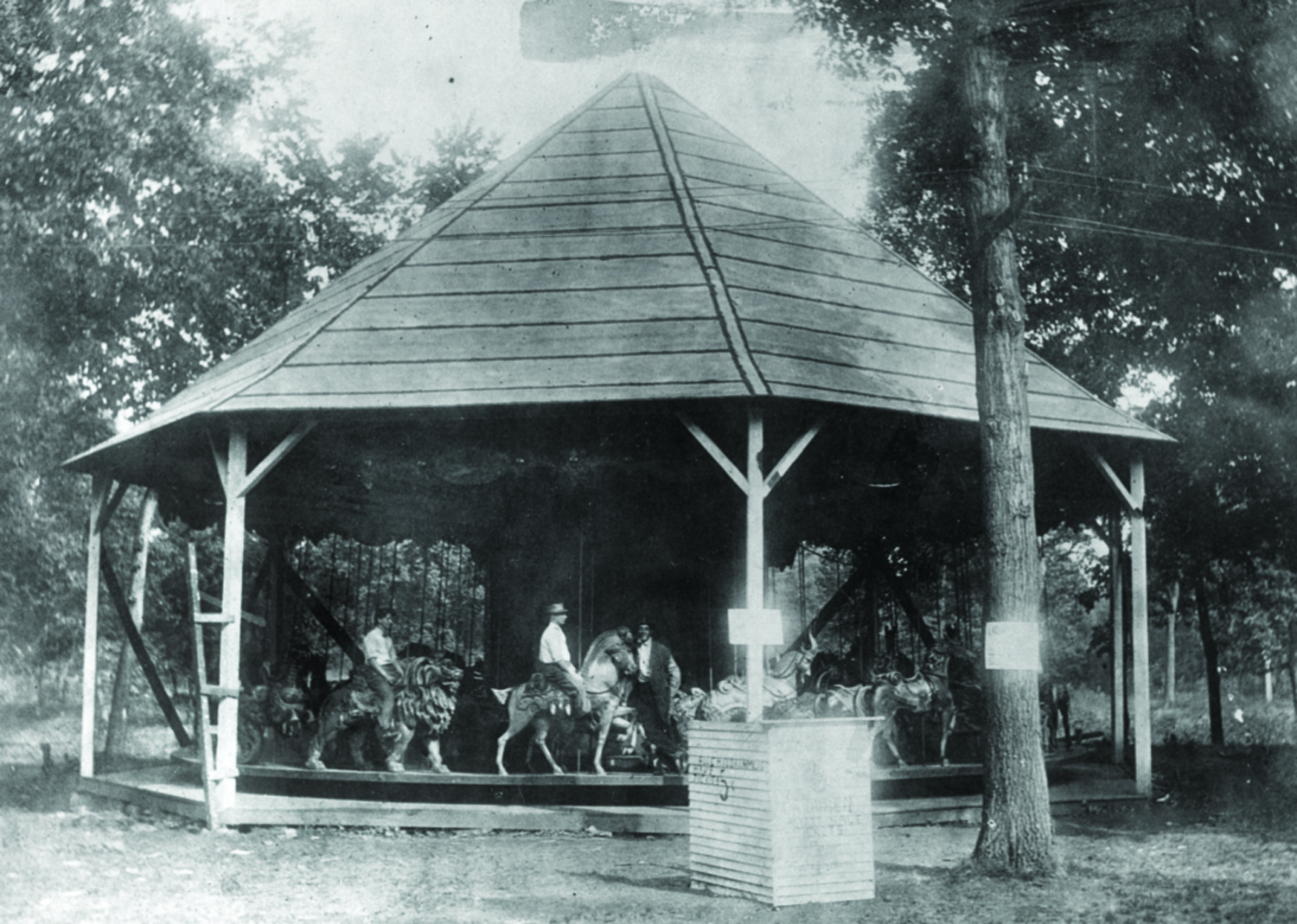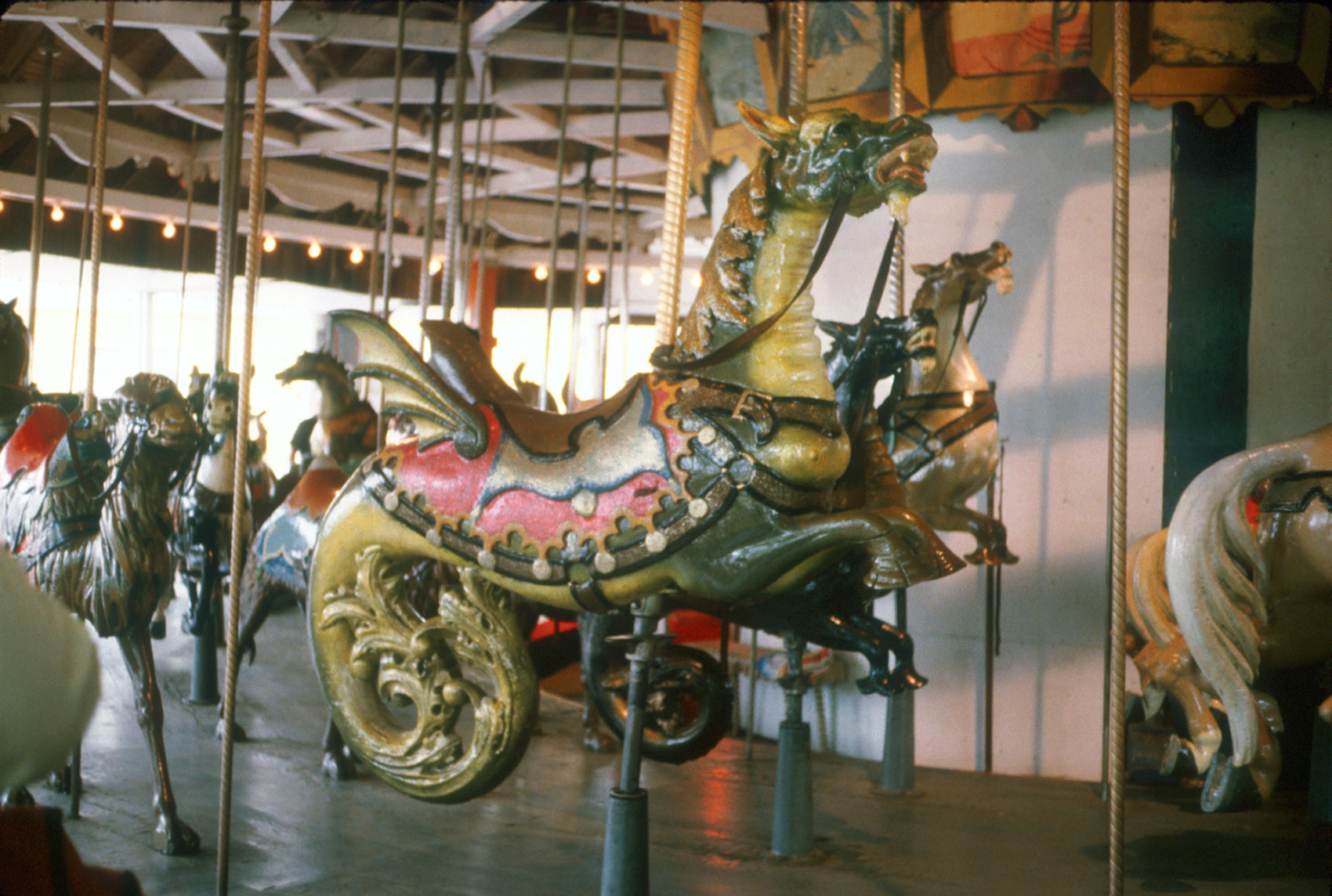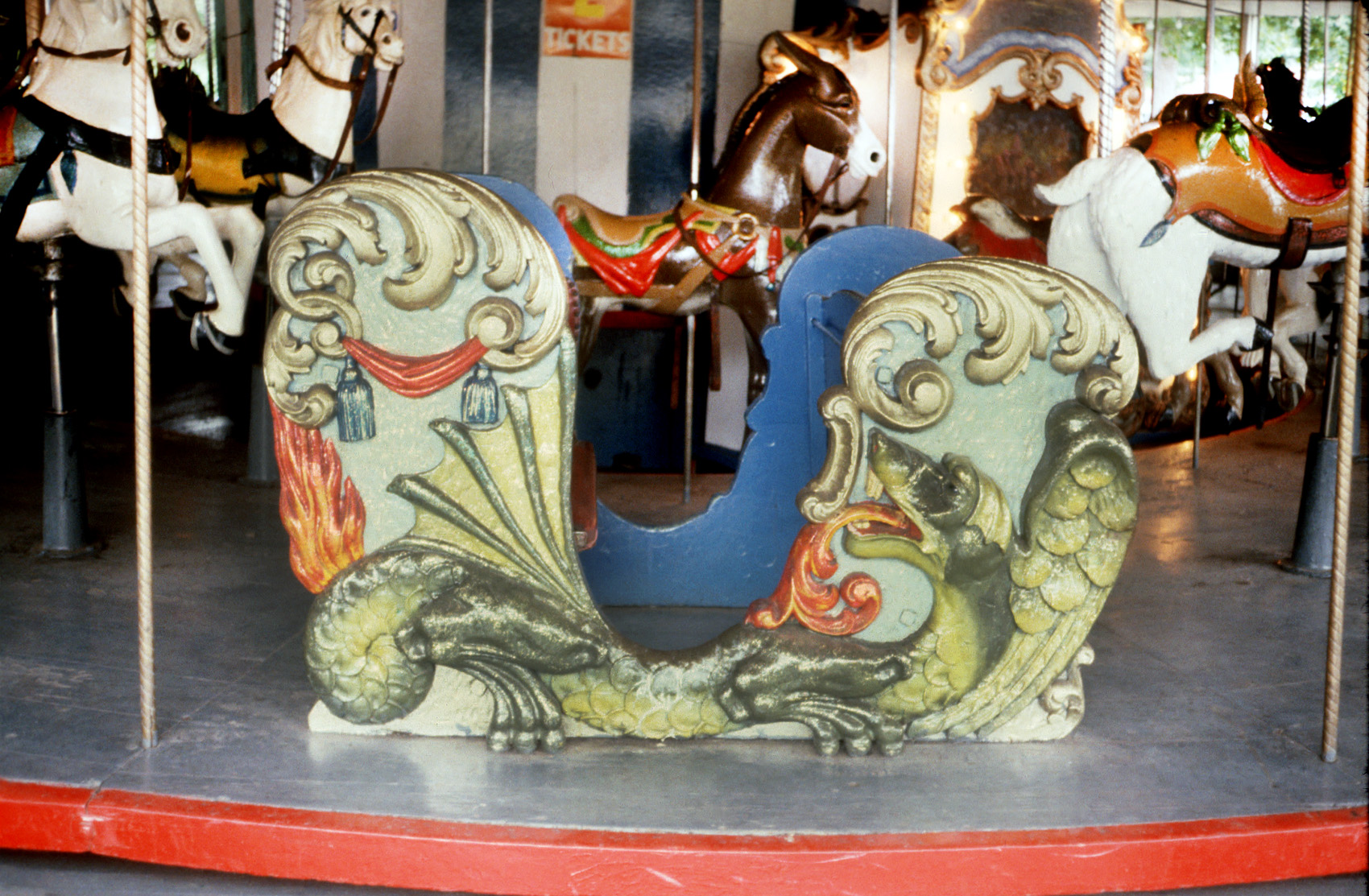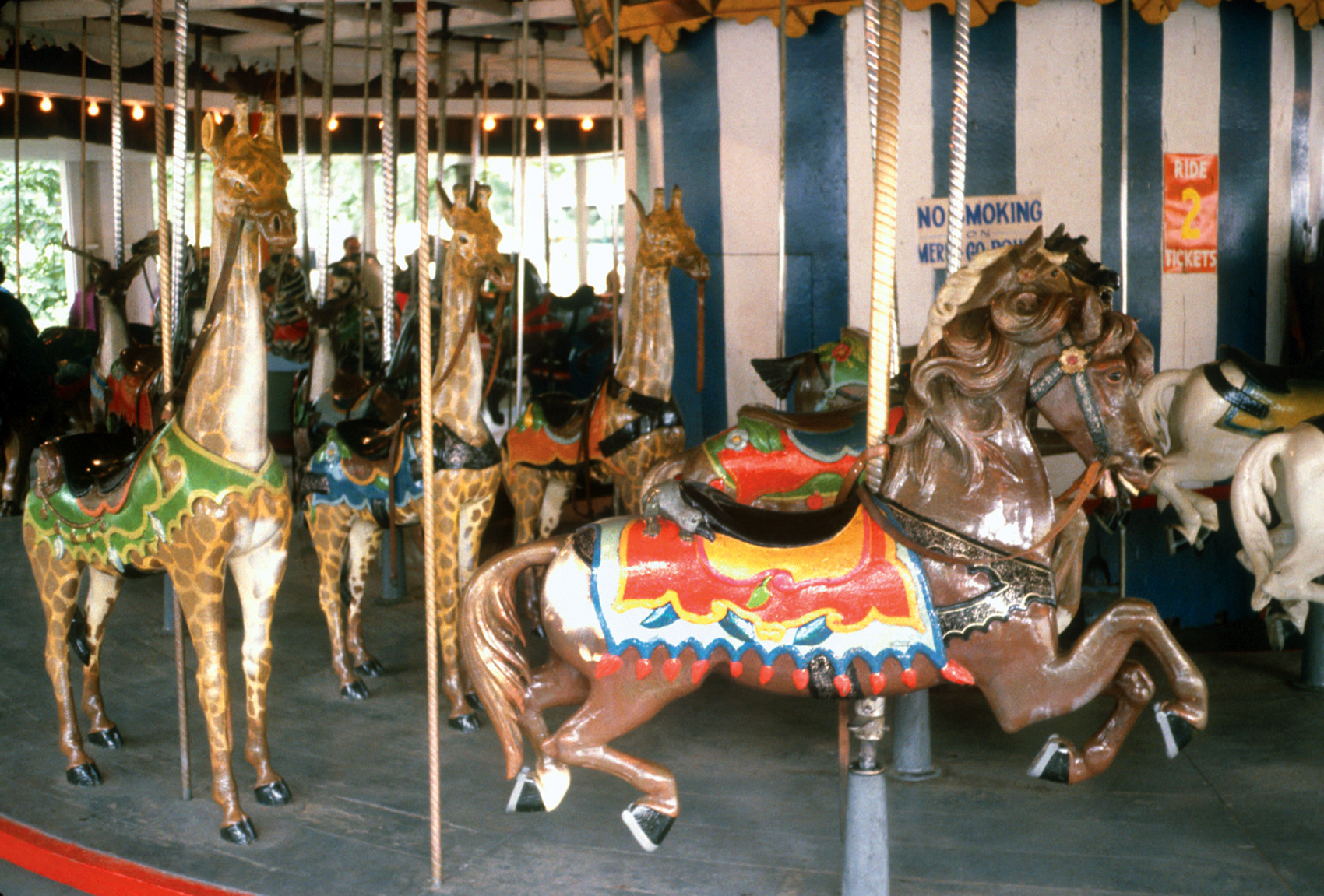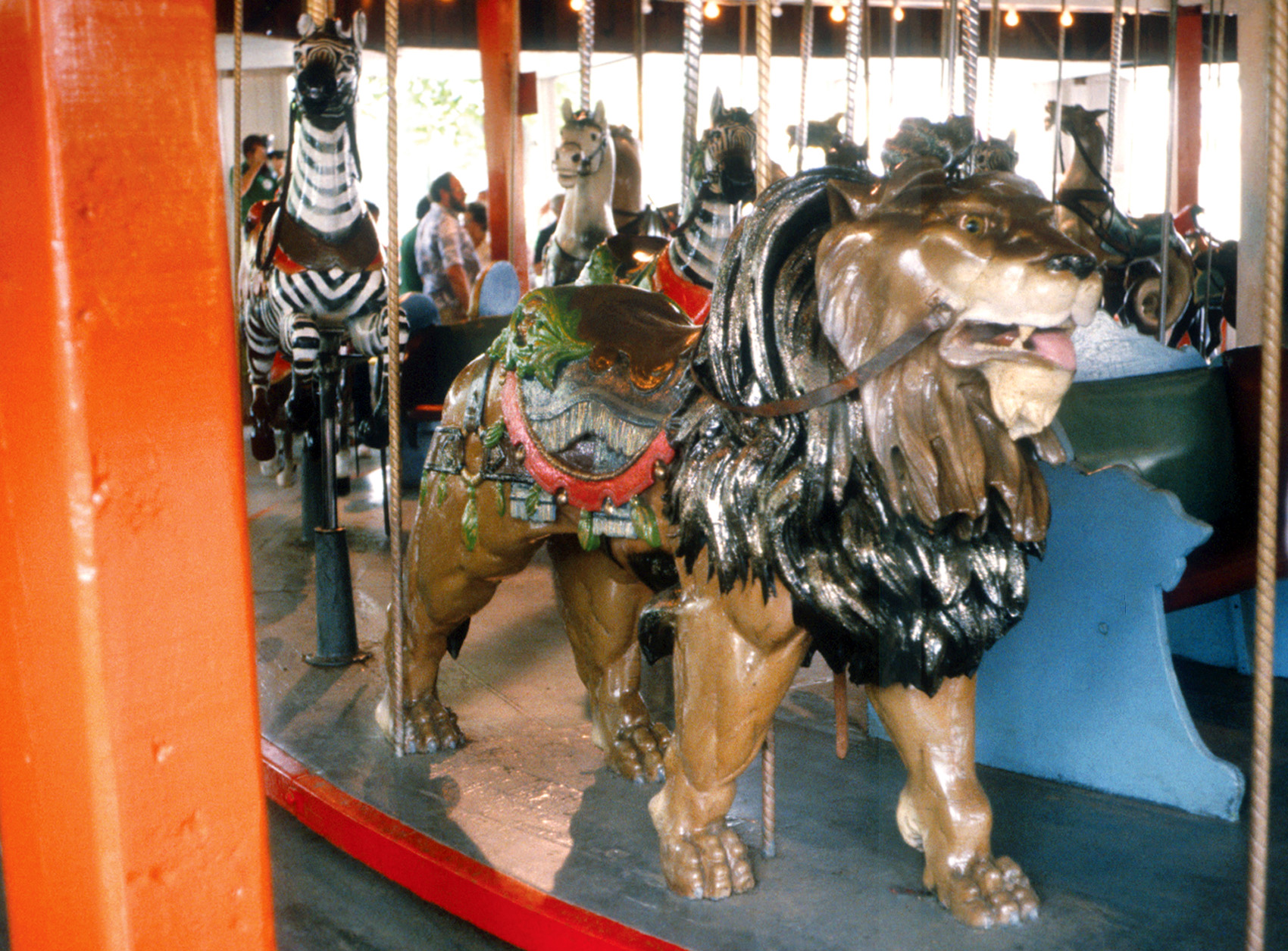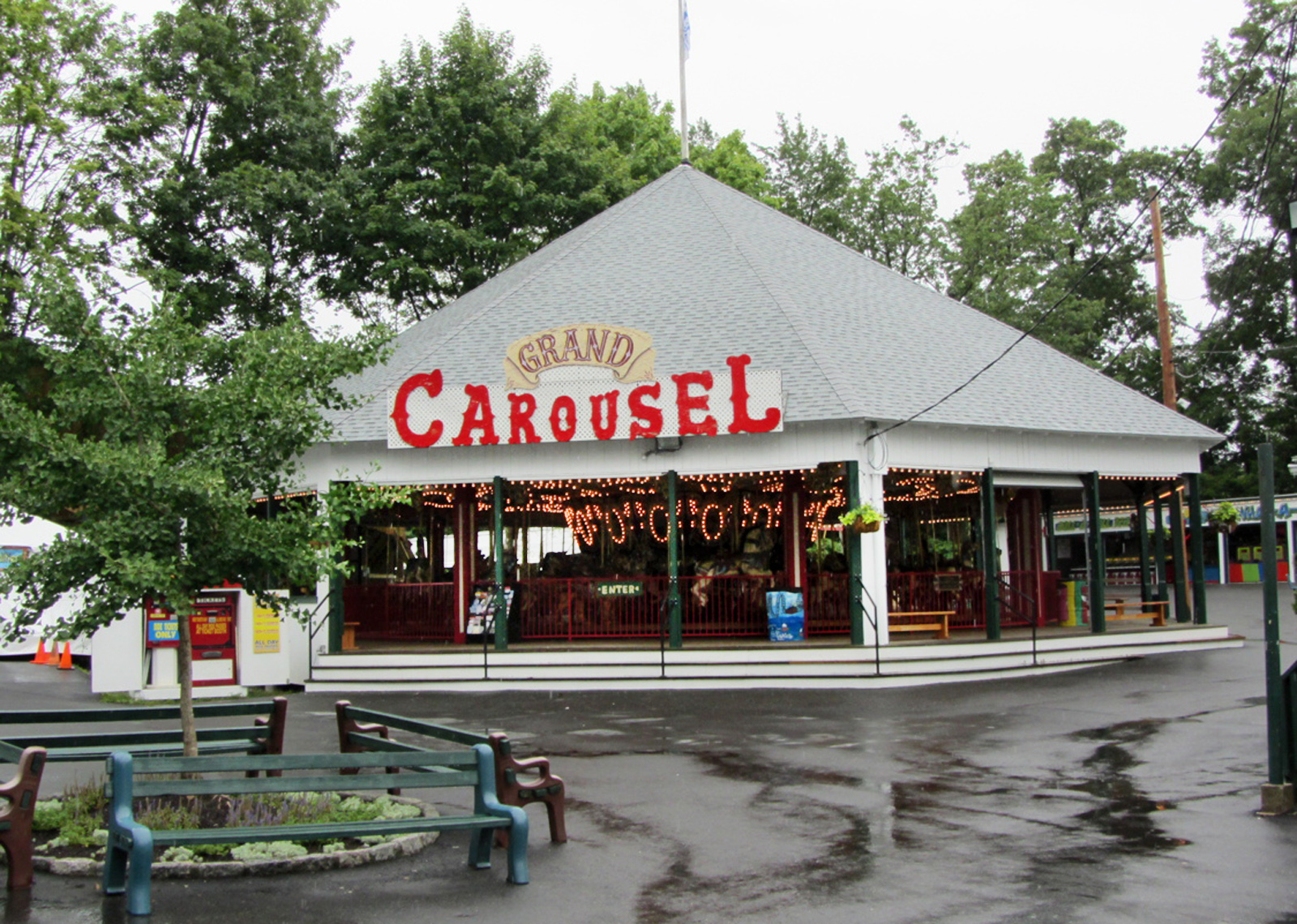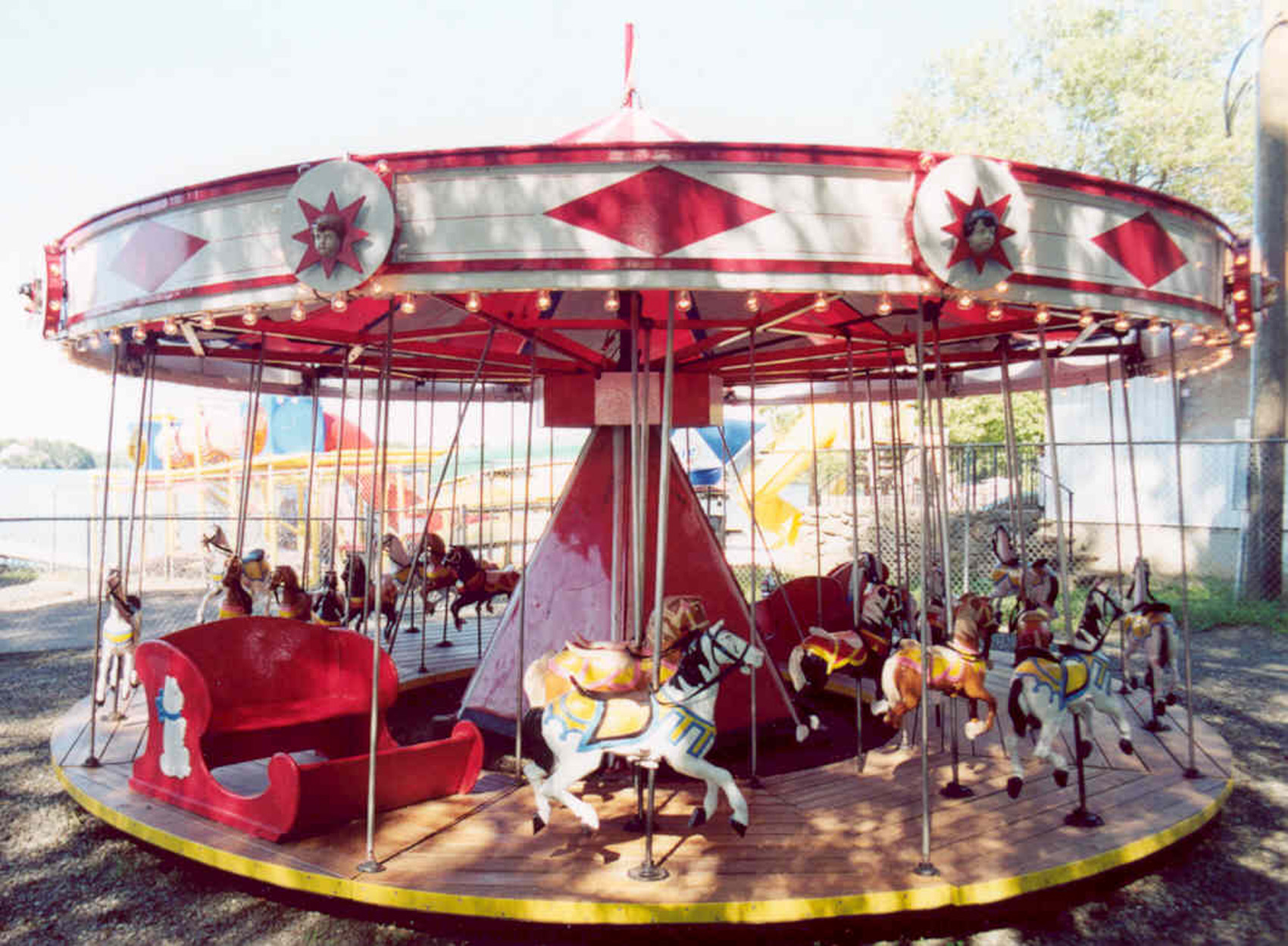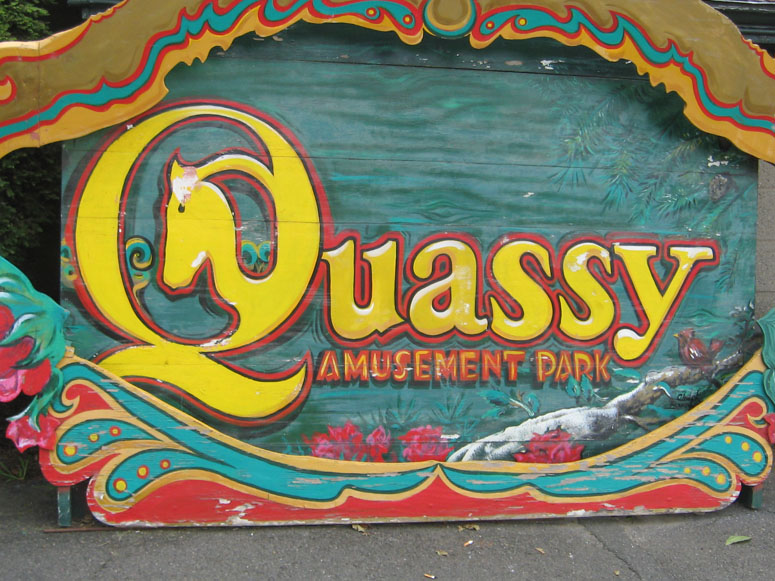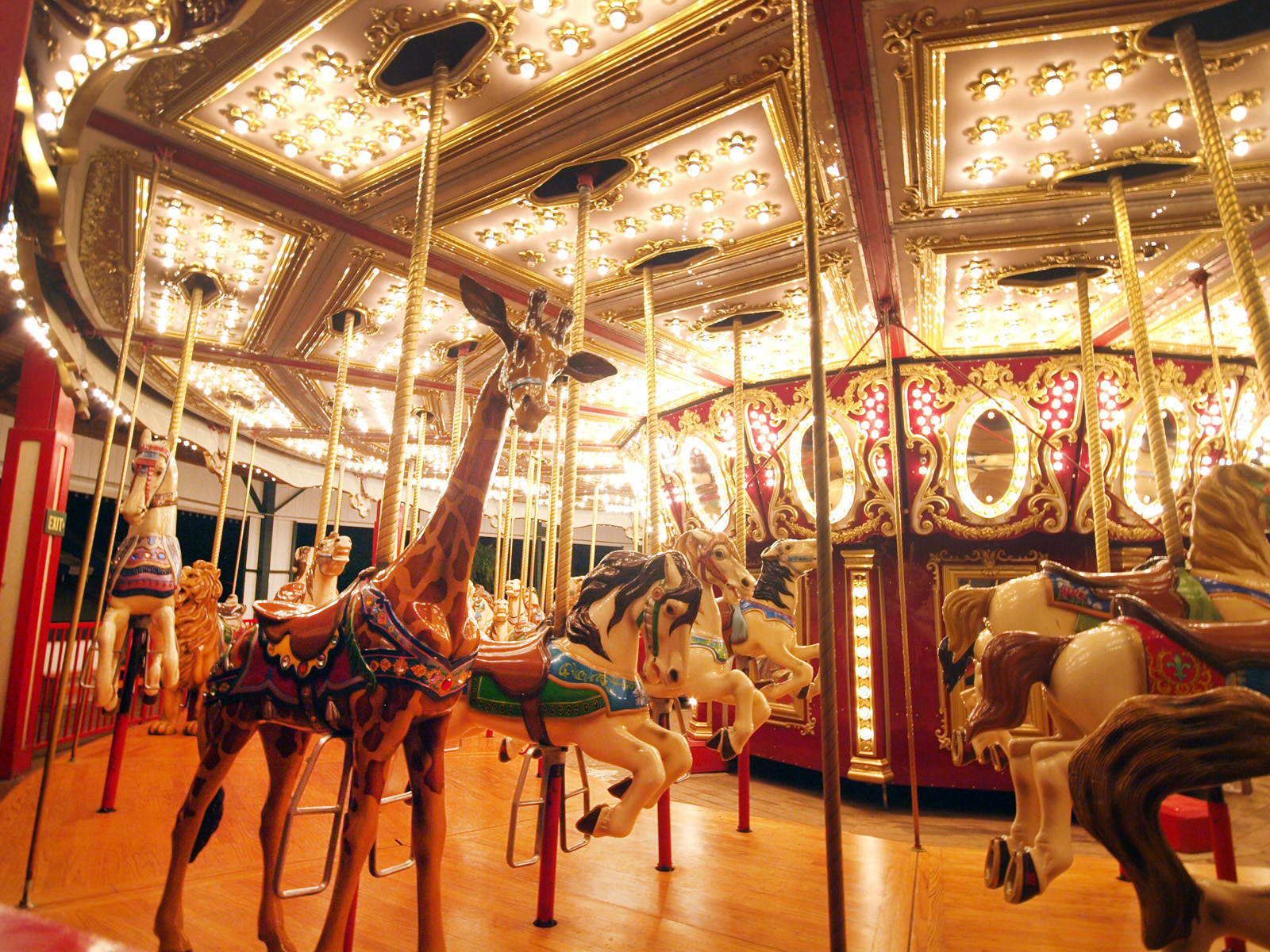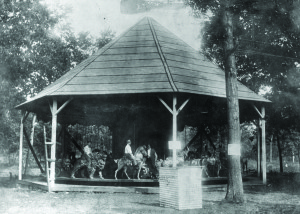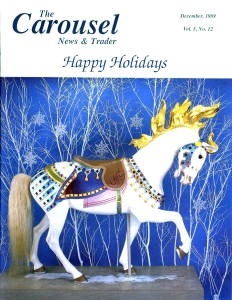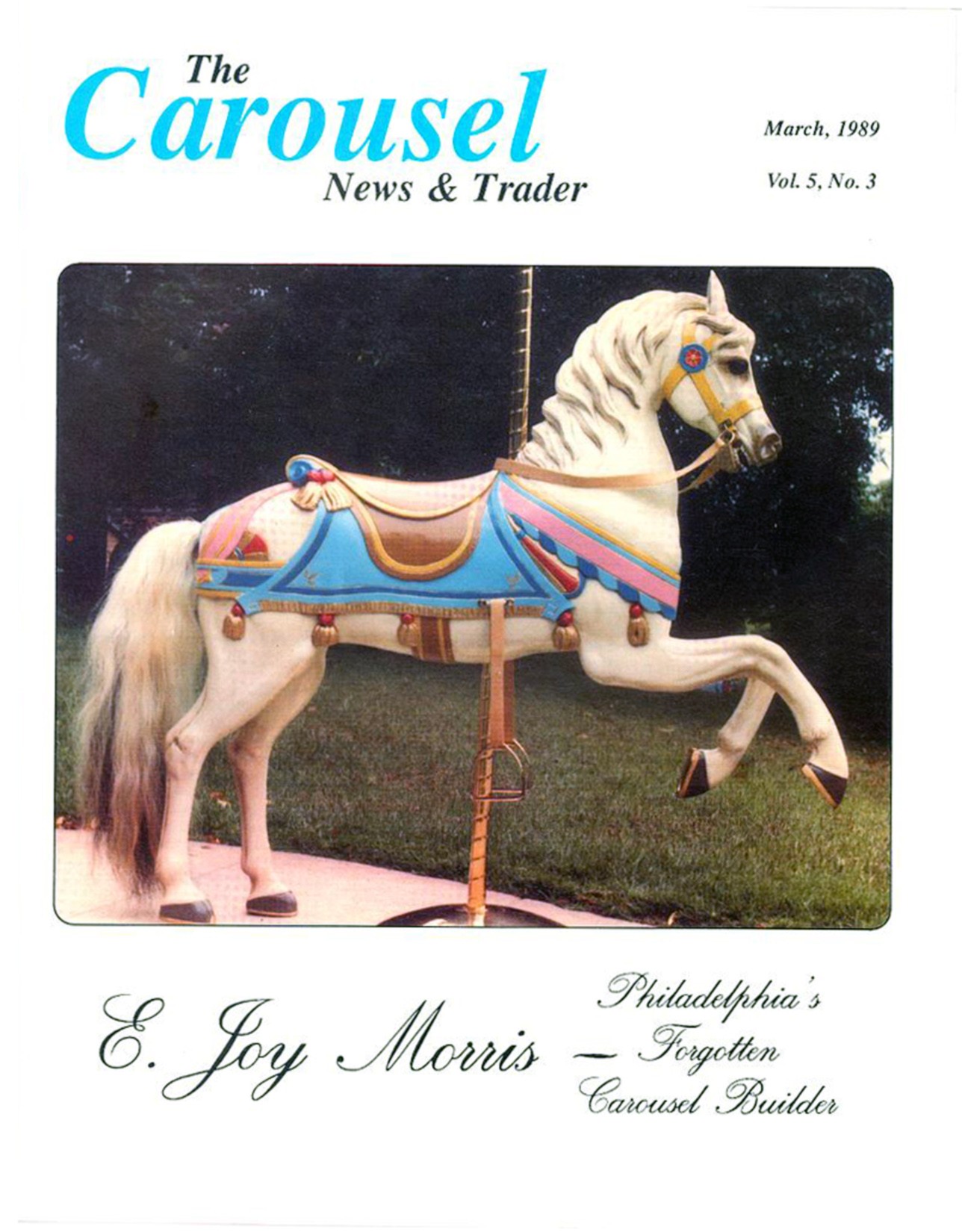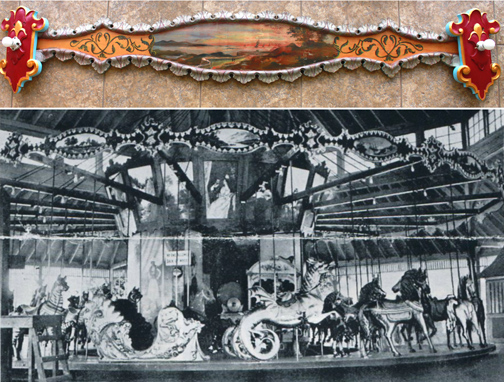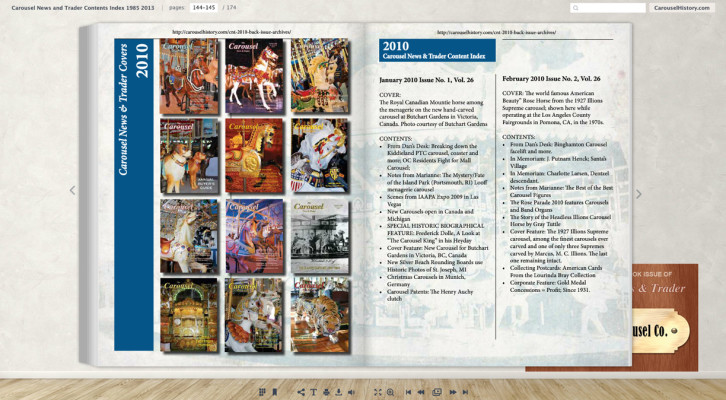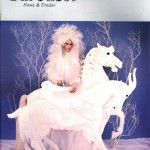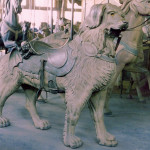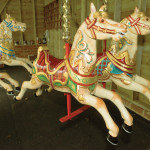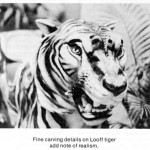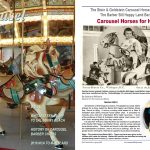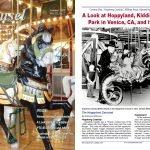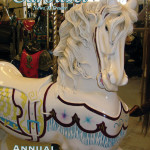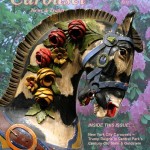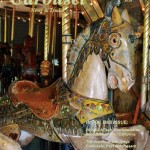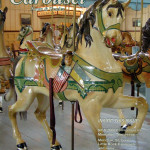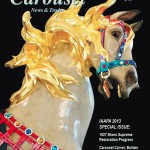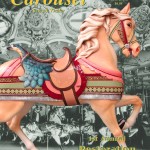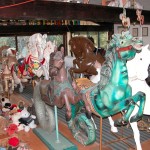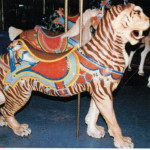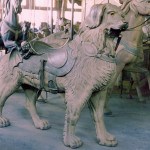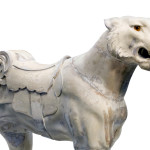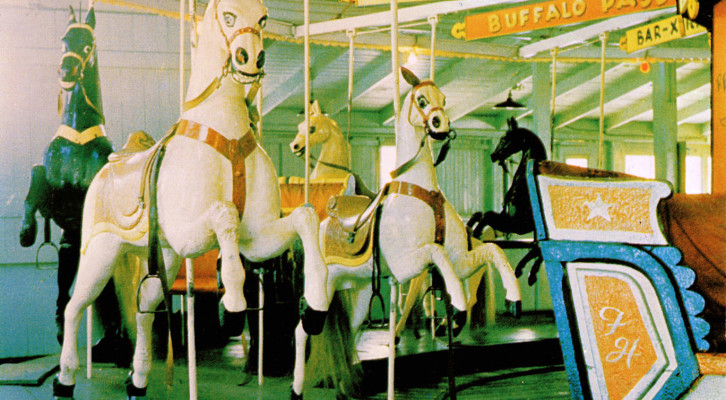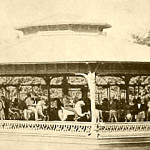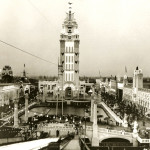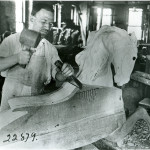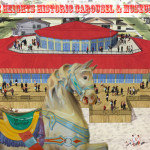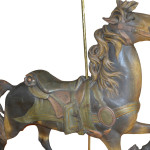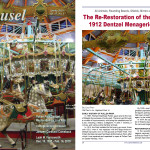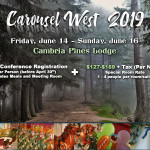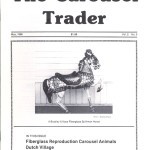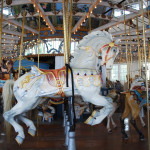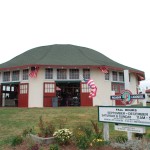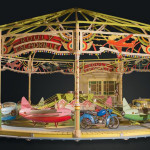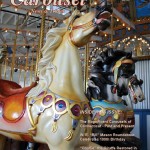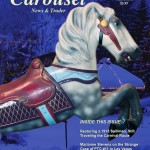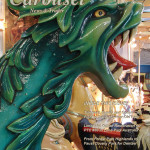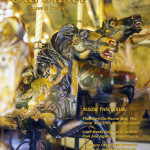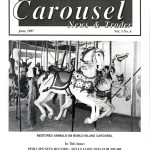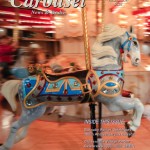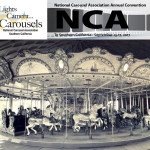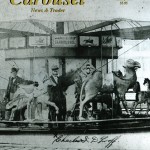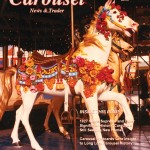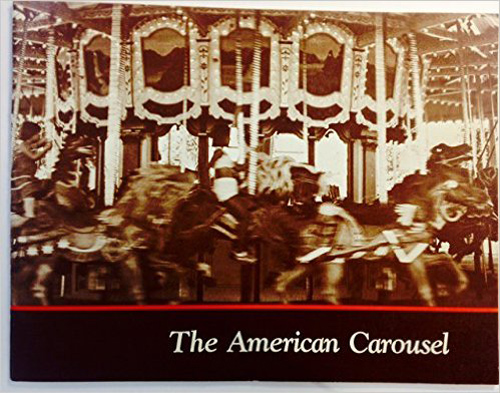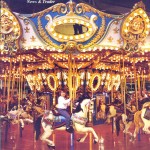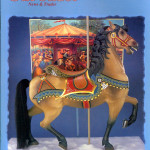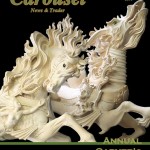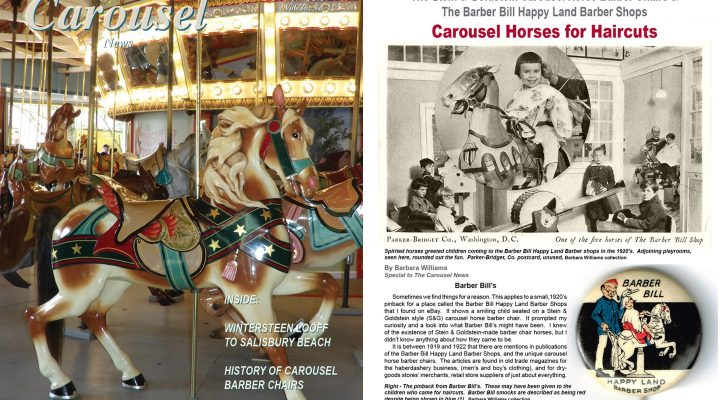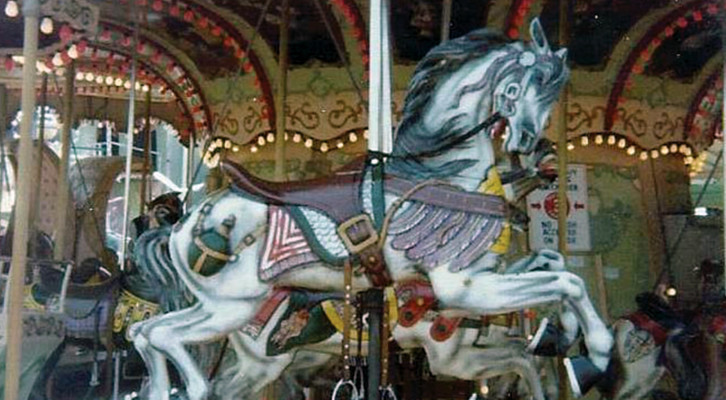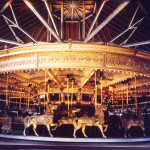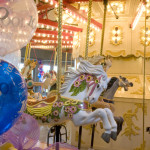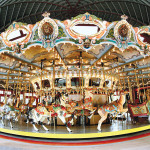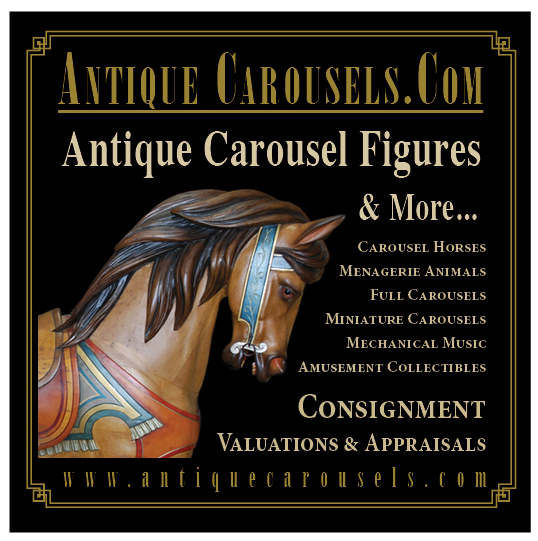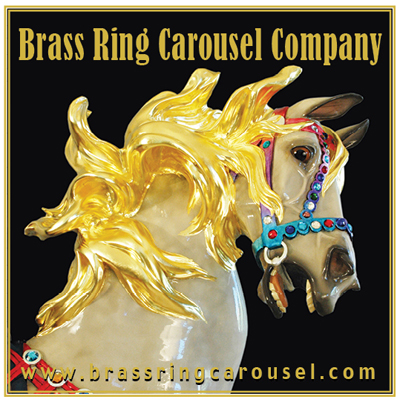Unique History of the Quassy Lake Amusement Park Carousels
Historic 1902 “Golden Age” Wooden E. Joy Morris Carousel Broken Up At Auction in 1989; 1920s Kiddie Mangels Carousel Sold; 1990s Chance Mfg. Spins On
By Ron Gustafson
MIDDLEBURY, Conn. – There are lions and tigers and bears – oh my! – not to mention giraffes, camels, plenty of horses and an occasional sea monster. Put them all together on a moving platform under one roof; add some colorful band organ music and you have a classic carousel. These magical machines have been creating smiles for more than 200 years and are considered the cornerstone of many modern-day theme parks.
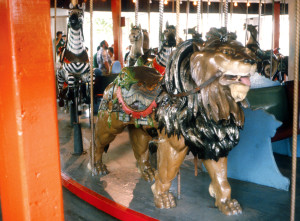 At Quassy Amusement & Waterpark, carousels have played a vital role in the history of the 107-year-old lakeside facility.
At Quassy Amusement & Waterpark, carousels have played a vital role in the history of the 107-year-old lakeside facility.
One of the earliest carousels operated at Quassy was a unique machine with a menagerie of animals built by E. Joy Morris (circa 1902) of Philadelphia, according to published accounts by William Manns, an authority on carousels.
The ride most likely operated at another amusement park prior to being acquired by Quassy, which officially opened in 1908. After its arrival at the Connecticut amusement park, the ride was assembled for full operation under the cover of a building. Records do not indicate the exact date of the acquisition, but the Morris carousel replaced a smaller machine which was operated lakeside.
Carousels designed by E. (Edward) Joy Morris featured magnificent figures hand carved of wood and his rides usually consisted of 26 horses and 20 menagerie animals – all stationary – standing in three rows, Manns noted. A new Morris carousel cost $8,000 in 1900, which was a huge investment during that era. According to Manns, Morris built around two dozen carousels during the eight years he produced them (1896-1903).
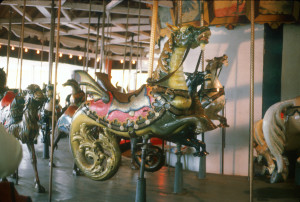 In 1903 Morris sold his manufacturing equipment and inventory of around 200 completed carousel figures to two men who formed The Philadelphia Toboggan Co. (PTC). The new owners were able to complete four carousels using Morris’ animals and, according to Manns, quickly establish themselves in the industry. It is believed Morris’ decision to sell his business was based on health problems. He died in 1929.
In 1903 Morris sold his manufacturing equipment and inventory of around 200 completed carousel figures to two men who formed The Philadelphia Toboggan Co. (PTC). The new owners were able to complete four carousels using Morris’ animals and, according to Manns, quickly establish themselves in the industry. It is believed Morris’ decision to sell his business was based on health problems. He died in 1929.
The Philadelphia Toboggan Co. ceased carousel production after The Great Depression of 1929. The company, still in existence today, is known worldwide for the design and construction of roller coaster trains.
The Morris carousel at Quassy consisted of a lion, tiger, three camels, three giraffes, three deer, two zebras, three goats, three hippocampuses, a burro, three chariots and 24 horses.
Morris’ carousel horses were renowned for their decorative saddle trappings, layered blankets and chest straps. In addition, Manns noted, figures carved behind the saddles included characters of the carvers, pets and friends.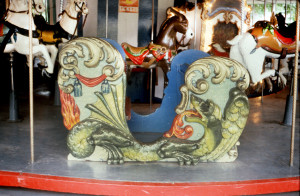
The Quassy carousel underwent an extensive overhaul sometime during the late 1920s, converting most of the stationary animals into “jumpers.” The conversion was done by the C.W. Parker Co., another carousel manufacturer located in Leavenworth, Kan.
The ride also found a different home at Quassy in 1927 – under the roof of a new, much larger roundhouse.
As Quassy – a traditional trolley park of the era – emerged as a survivor of The Great Depression, so did the Morris carousel.
But the ride nearly went up in flames following the purchase of the park in 1937 by three local businessmen, including the late John Frantzis Sr.
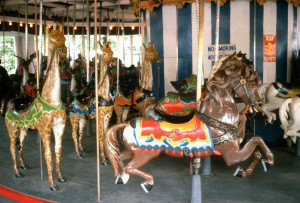 “There was a dispute over the carousel when the park was purchased back then,” George Frantzis II, a park owner, recalled of the incident. “The argument was about the carousel being part of the purchase price. They (former owners) stacked the animals up in a pile out back of the building and had poured gasoline on them – ready to torch them.”
“There was a dispute over the carousel when the park was purchased back then,” George Frantzis II, a park owner, recalled of the incident. “The argument was about the carousel being part of the purchase price. They (former owners) stacked the animals up in a pile out back of the building and had poured gasoline on them – ready to torch them.”
Fortunately the quarrel was resolved before anyone struck a match. The carousel figures were rescued from the heap and the ride was reassembled under the roundhouse, where it continued to operate until October of 1989.
Quassy announced the carousel – then the last complete machine built by E. Joy Morris – would be retired that year due to maintenance and insurance issues. There were attempts by a number of outside groups to purchase and move the carousel – perhaps – to a municipal park, but none of them were successful.
On Oct. 8, 1989, large lines formed for a last ride on the classic carousel at Quassy Amusement Park. The ride was sold during an auction on Oct. 21. “My whole family grew up riding that carousel,” Frantzis said of the device, adding that it was difficult to see the ride auctioned. He is a member of the third generation of the Frantzis family which now owns and operates the park.
All of the figures were sold separately, with the single lion on the ride capturing the highest bid at $60,000. The lone tiger went for $45,000. The two original sea monsters on the carousel – the third original was stolen in 1985 – sold for $20,000 and $15,000 respectively. The replacement figure drew a final bid of $6,000. The frame, mechanism and trim were sold to the New England Carousel Museum in nearby Bristol, Conn., for $5,000.
By the end of the day the carousel had fetched just over $638,000. In the auction audience was a teary-eyed Terri-lee Morris, the granddaughter of the carousel’s creator.
The 1927 roundhouse at Quassy did not sit empty for the 1990 season as the Frantzis family had already invested in a new machine. Chance Rides of Wichita, Kan., built a 50-foot grand carousel for the park, which was delivered in March of 1990 and assembled in time for the upcoming season. The new carousel has a charm and history all its own. The inner three rows of horses – all jumpers – were fashioned after those of the former Allan Herschell Co. of North Tonawanda, N.Y. Herschell was once the largest producer of carousels in the world and introduced its first rides in the late 1800s. Chance Rides purchased the manufacturing rights to Herschell products in 1970. And while all the figures on the new carousel are made of fiberglass, the four menagerie animals – giraffe, lion, sea monster and camel – are also unique. Craftsmen at Chance spent more than 100 hours on each figure and say no two menagerie animals leaving the factory are exactly alike.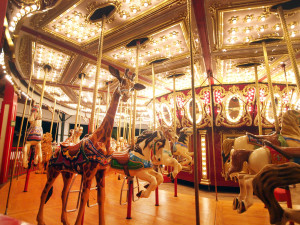
The lead horse – most decorative horse on the outside row – is a spectacular jumper with colored jewels and a flared mane. It shares the outside row with the menagerie animals and other horses from the Bradley & Kaye line. The former Bradley & Kaye Amusement Co. of Los Angeles created numerous molds in the 1970s and ’80s from original carousel figures created by the master carvers of the early 1900s. Chance Rides acquired the Bradley & Kaye manufacturing rights in 1987 so these unique figures could be added to new carousels.
Quassy’s new carousel also has two chariots which are attached to the ride’s platform, which is made of oak. The ornate scenery with thousands of clear light bulbs is fashioned from the Gustav A. Dentzel era. The Dentzel Company created classic carousels in the Germantown area of Philadelphia prior to The Great Depression and was a competitor of PTC and Herschell. Today a plaque at Quassy’s historic carousel roundhouse honors the late George J. Frantzis (1927-1997) for his more than 50 years of commitment to the community and the park.
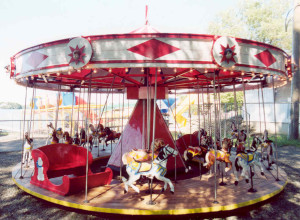 Quassy operated another carousel of historic interest in its lakefront kiddieland. In fact, the small carousel – at the time – was the oldest ride in the park. The 1924 carousel was built by the former W.F. Mangels Co. of Coney Island, Brooklyn, N.Y. William Fredrick Mangels was a German immigrant who came to the United States in 1883 and founded his company in 1890. In 1907 he introduced an improved galloping mechanism for carousels, which is said to have led to the later development of jumping carousel horses. His company began carousel production in 1910 and company letterhead then started to read “W.F. Mangels Company Carrousel Works.”
Quassy operated another carousel of historic interest in its lakefront kiddieland. In fact, the small carousel – at the time – was the oldest ride in the park. The 1924 carousel was built by the former W.F. Mangels Co. of Coney Island, Brooklyn, N.Y. William Fredrick Mangels was a German immigrant who came to the United States in 1883 and founded his company in 1890. In 1907 he introduced an improved galloping mechanism for carousels, which is said to have led to the later development of jumping carousel horses. His company began carousel production in 1910 and company letterhead then started to read “W.F. Mangels Company Carrousel Works.”
But the ride the W.F. Mangels Co. was most famous for was the Whip, which was introduced in 1914. In less than 15 years more than 500 Whip rides were manufactured and sold worldwide. A number of these devices are still operating at amusement parks today. By 1927 William Mangels had obtained more than 50 patents for his amusement devices and was considered a pioneer of the industry. It is also believed that his company was the first to introduce children’s, or kiddie, rides to the industry. Records show the company produced scaled down versions of adult rides in the early 1920s.
W.F. Mangels died in 1958, but the company continued to operate under the direction of his son, Albert, until finally closing in the late 1970s.
The Mangels carousel at Quassy was a kiddy ride with 24 metal jumping horses and two chariots. The ride was acquired by Quassy in 1989 when equipment at Ocean Beach Park in New London, Conn., was auctioned. It operated at Ocean Beach Park from 1980 to 1989, according to Eddie Nabhan, a former Ocean Beach Park manager who is now president of Fun Depot in Lake Worth, Fla. Nabhan said the ride operated inside an arcade building near Ocean Beach Park before he purchased it in 1980. There were no previous records about the ride available. Quassy sold the Mangels ride in 2008 to a private individual in Texas.
The carousels at Quassy are an important part of the park’s heritage and whoever said “a horse is a horse” would certainly find the Frantzis family ready to differ.
Ron Gustafson, is a writer, and amusement park historian. He is the author of “A Century Of Fun – History of Midway Amusement Park” and “Quassy Amusement Park – A History”, both by Midway Publications, Nashua, N.H. Ron is also Director of Marketing & Public Relations at Quassy Amusement Park, Middlebury, CT.
© 2015 Ron Gustafson
Quassy Lake 1902 E. Joy Morris Carousel 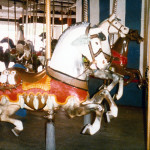
Photo Gallery
Read the post-auction issue online.
Or visit Quassy Amusement Park on Facebook
Click Here for More Quassy Trolley Park History
Article Acknowledgements:
* The Carousel News & Trader, December 1989 edition
* William Manns, carousel art historian
* National Amusement Park Historical Association, Jim Futrell, historian
* Chance Rides, Wichita, Kan.
* Eddie Nabhan, president, Fun Depot, Lake Worth, Fla.
* “Midway Park, A Century Of Fun”, Chapter 6, History of the W.F. Mangels Co., by Ron Gustafson.

